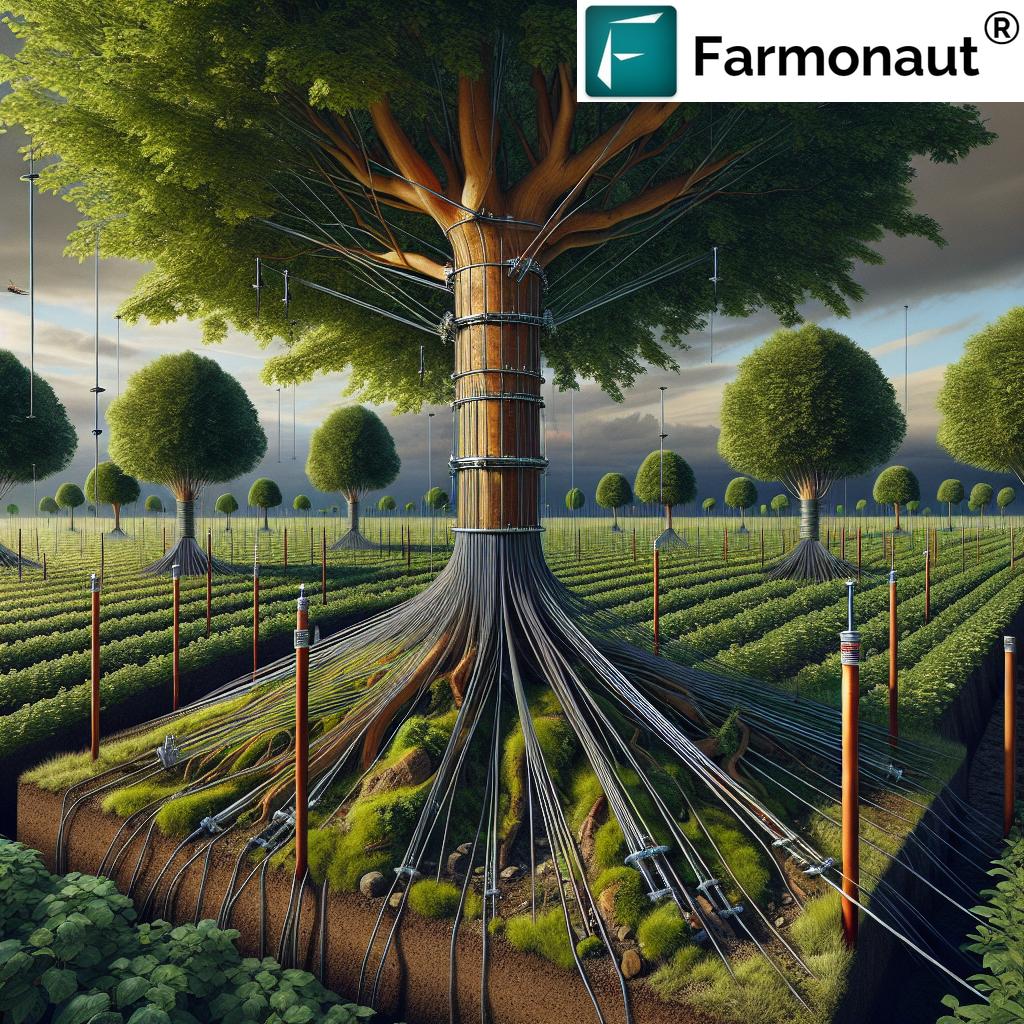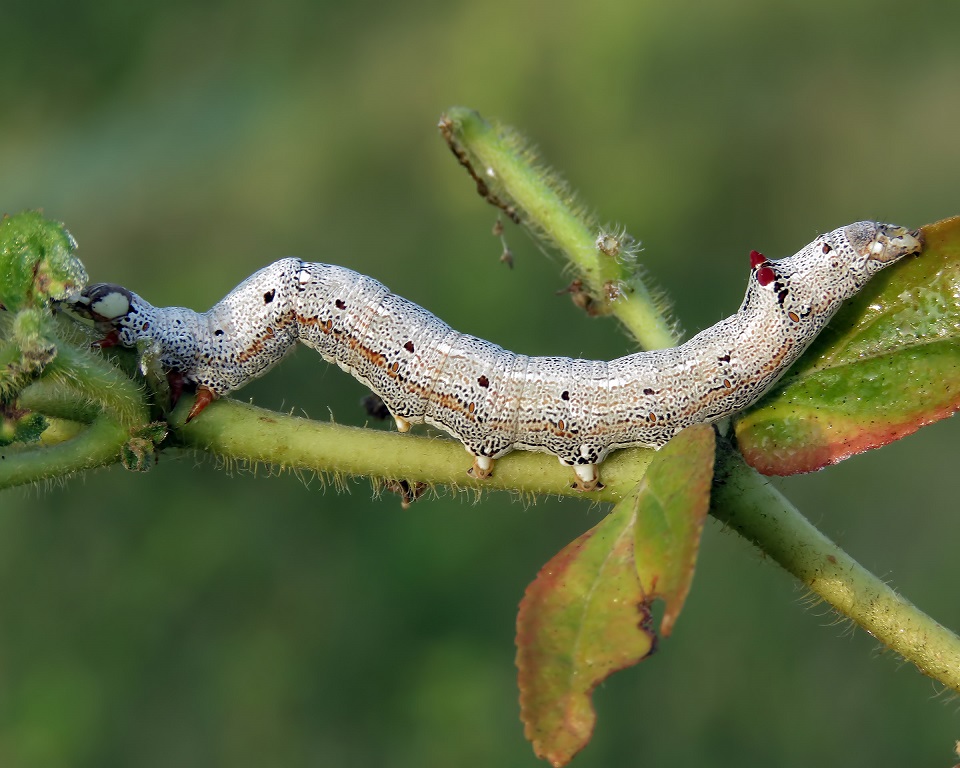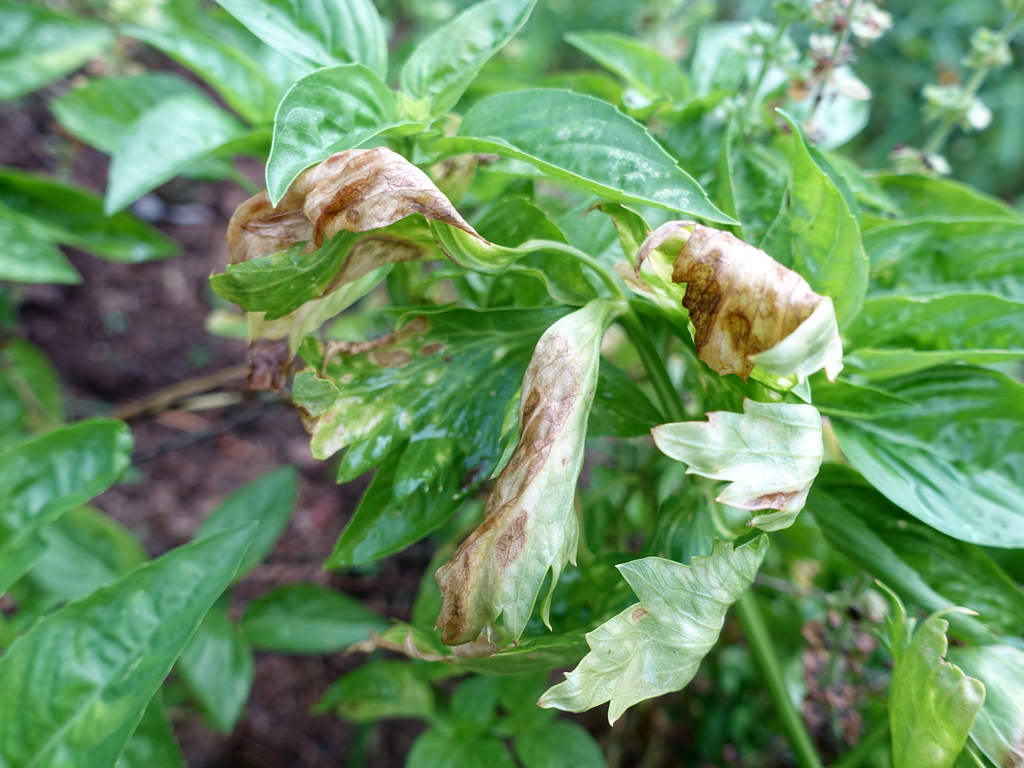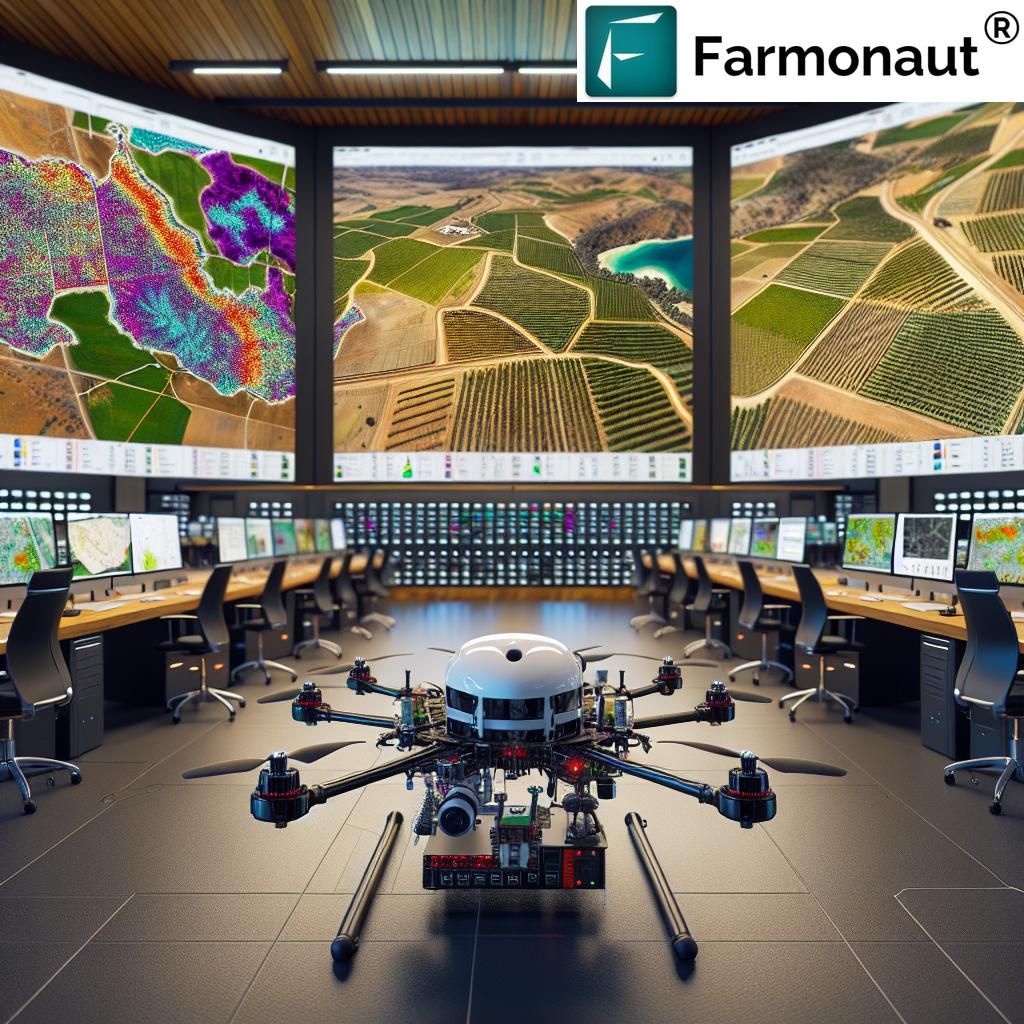“Forests managed sustainably can support up to 50% more plant species than unmanaged forests.”
Forestry Management: 7 Secret Hacks for Biodiversity
Forestry management is a vital practice for overseeing the establishment, growth, composition, health, and quality of forests to meet the diverse needs and values of our society. By implementing sustainable forestry practices, we aim to ensure the long-term availability of forest resources, conserve biodiversity, and enhance the health of ecosystems for future generations. This comprehensive guide uncovers the seven secret hacks behind effective forestry management that help us protect forest biodiversity, maintain soil and water quality, and support environmental sustainability.
In this article, we will explore biodiversity conservation strategies, innovative technologies by Farmonaut, best management practices for forests, and community-based approaches—all tailored for readers passionate about environmental stewardship, sustainable forestry, and the health of our planet’s vital forests.
We recognize the increasing importance of forest management as a tool not only for sustainable economic development but for conserving our world’s ecological treasures. Through thoughtful practices and policy, forests—home to more than 80% of terrestrial biodiversity—can be managed to balance human and wildlife needs, improve ecosystem health, and provide vital climate regulation.
Key Objectives of Forestry Management
The core objectives of effective forestry management revolve around more than just resource extraction—they involve stewardship, balance, and resilience-building within forest ecosystems. Let’s explore the essential areas that guide our responsible management decisions:
- Sustainable Resource Utilization: We must ensure woods such as timber, fuelwood, and valuable non-timber products are harvested at a rate that does not exceed forests’ natural regeneration capacity.
- Biodiversity Conservation: Protecting the variety of life within forest ecosystems—including plant, tree, and animal species—is crucial to maintaining ecological balance and continuity.
- Soil and Water Conservation in Forestry: Implementing practices that prevent soil erosion and maintain water quality is vital for forest health and supporting human communities that rely on clean water sources.
- Climate Change Mitigation through Forests: Thoughtfully managed forests can enhance carbon sequestration, helping global efforts to curb the adverse effects of climate change and reduce atmospheric carbon.
- Community Engagement & Livelihoods: Involving local communities creates shared responsibility, ensures better outcomes, and improves livelihoods by providing sustainable income from forest products.
By balancing these objectives, our forest management approaches can safeguard forest health and ecosystem services for future generations.
“Over 80% of terrestrial biodiversity is found in forests, making their management crucial for ecosystem health.”
Sustainable Forestry Practices for Biodiversity Conservation
A variety of sustainable forestry practices have been developed and tested globally to maintain forest health, biodiversity, and productivity. When overseen properly, these practices help us promote ecological balance, ensure resource availability, and enhance the well-being of surrounding human communities.
- Prescribed Burning: The controlled use of fire to reduce fuel loads, manage undergrowth, promote natural regeneration, and stimulate the growth of fire-adapted tree species.
- Forest Thinning and Pruning: Selectively removing trees and lower branches to decrease competition for sunlight, increase growth rates, and improve resilience against pests and disease (Learn more).
- Agroforestry Systems: Integrating trees and shrubs into agricultural landscapes uplifts biodiversity, protects soil, and provides additional income streams.
- Integrated Pest Management (IPM) in Forestry: Addressing pest problems through a blend of biological, cultural, and chemical means, always aiming for the most environmentally responsible approach (Detail on IPM).
- Variable Retention Harvesting: Involves leaving specific trees or patches unharvested during logging to preserve ecosystem processes and shelter biodiversity.
In the sections that follow, we’ll break down our 7 most effective forestry management hacks for biodiversity, supported by practical examples and actionable guidelines for modern foresters and eco-conscious communities.
Forestry Management: 7 Secret Hacks for Biodiversity
To truly enhance biodiversity and optimize ecosystem health in our forests, it’s essential to implement the most effective, science-backed management practices. Below, we present seven secret hacks—practical, evidence-based approaches that are transforming how we manage forests for the benefit of wildlife, soil, water, and future human societies.
1. Prescribed Burning: Restoring Balance and Enabling Regeneration
- What it is: Prescribed or controlled burning involves intentionally setting planned, low-intensity fires under carefully managed conditions. This is an ancient practice adopted by many indigenous peoples and now widely used in sustainable forestry.
- Biodiversity Benefit: Controlled burning can reduce accumulated dead wood and leaf litter (“fuel loads”), open up the forest floor for new seedlings, suppress invasive species, and promote healthy regeneration of fire-adapted plant and tree species.
- Ecosystem Health: Regular fire events maintain forest structure, prevent catastrophic wildfires, and support habitat variety for birds, insects, and mammals.
- Best Practice Tip: Prescribed burning should be executed by trained professionals and always comply with safety protocols to prevent uncontrolled wildfires.
2. Forest Thinning & Pruning: Maximizing Growth, Reducing Disease & Competition
- What it is: Thinning removes select trees to reduce density, while pruning cuts low branches. This practice minimizes shading, encourages healthy, rapid growth, and increases resilience against pests and pathogens.
- Biodiversity Benefit: With more sunlight reaching the forest understory, diverse shrubs, herbs, and young trees flourish, supporting a wider variety of animal species.
- Ecosystem Health: Reduces fungal and bacterial risks, lowers competition for water and nutrients, and improves overall tree health and timber quality.
- Best Practice Tip: Selective thinning, rather than clear-cutting, optimizes diversity and maintains habitat complexity.
3. Agroforestry Systems: Integrating Trees into Agricultural Landscapes
- What it is: Agroforestry integrates trees, shrubs, and sometimes livestock into agricultural systems. These living barriers and intercropping methods increase the productivity of land while preserving wildlife habitat.
- Biodiversity Benefit: Mixing plant species boosts pollinator abundance, provides homes for wildlife, enhances soil fertility, and strengthens resilience to climate change.
- Ecosystem Health: Tree roots help prevent erosion, fix nitrogen, and improve soil and water quality, yielding better crop and timber yields over time.
- Best Practice Tip: Use native tree species and design systems to suit local climate and agricultural needs for maximum benefit.
4. Integrated Pest Management in Forestry: Smart, Responsible Pest Control
- What it is: Integrated Pest Management (IPM) is a holistic approach to control pests using a blend of cultural, mechanical, biological, and—when absolutely necessary—chemical methods.
- Biodiversity Benefit: By reducing or precisely targeting pesticide use, IPM protects non-target insects, birds, mammals, and aquatic life, maintaining healthy food webs.
- Ecosystem Health: Encourages beneficial insects and reduces the risk of pest resistance and outbreaks, leading to more resilient forests.
- Best Practice Tip: Use ongoing monitoring and prediction tools, such as those powered by AI and satellite imagery, for timely and targeted interventions.
5. Variable Retention Harvesting: Leaving Legacy Trees & Patchwork Habitats
- What it is: Instead of clear-cutting, this method retains select trees or clusters to provide immediate habitat, ensure seed sources for regeneration, and maintain ecosystem functions after logging operations.
- Biodiversity Benefit: Sustains microhabitats for a wide range of birds, insects, fungi, and mammals, boosts structural diversity, and helps secure long-term ecological balance.
- Ecosystem Health: Reduces fragmentation, supports wildlife movement corridors, and maintains soil stability.
- Best Practice Tip: Design variable retention plans with local biodiversity goals in mind, and monitor outcomes for continuous improvement.
6. Protecting Riparian Buffers & Wetlands: Safeguarding Water & Soil Quality
- What it is: Maintaining or restoring vegetated zones—such as riverbanks, lakeshores, and wetland boundaries—keeps sediment, nutrients, and pollutants out of waterways and preserves critical aquatic habitats.
- Biodiversity Benefit: Provides safe migration corridors, breeding grounds, and refuge for fish, amphibians, water birds, and many threatened species.
- Ecosystem Health: Prevents soil erosion, sustains natural hydrology, and improves water quality.
- Best Practice Tip: Implement buffer widths and native vegetation requirements as part of forest certification and BMPs for water protection.
7. Enhancing Soil Health & Carbon Sequestration: Investing in Our Future
- What it is: Practicing minimum soil disturbance, adding organic matter, and managing ground cover encourages healthy microbial communities and cycles more carbon into the soil.
- Biodiversity Benefit: Fertile soils support more diverse plant life, which in turn feeds and houses a variety of insects, birds, and mammals.
- Ecosystem Health: Increases resilience to droughts, floods, and climate shifts while locking away more atmospheric carbon, aiding in global climate change mitigation.
- Best Practice Tip: Monitor soil health indicators such as organic carbon and take remedial actions as needed using sustainable inputs.
Comparison Table: Sustainable Forestry Practices and Their Biodiversity Benefits
| Forestry Management Hack | Estimated Increase in Biodiversity (%) | Main Ecosystem Benefit | Example Species Benefited |
|---|---|---|---|
| Prescribed Burning | +30-35% | Promotes regeneration; reduces fuel load; boosts habitat variety | Fire-adapted pines, oaks, woodpeckers, ground beetles, native grasses |
| Forest Thinning & Pruning | +20-25% | Increases structural diversity; lets more light to understory | Songbirds, deer, wildflowers, fungi |
| Agroforestry Systems | +40-45% | Improves habitat connectivity; boosts pollinators & soil health | Bees, fruit bats, legumes, predatory insects, native birds |
| Integrated Pest Management (IPM) | +15-20% | Protects beneficial species; supports food web balance | Ladybugs, predatory wasps, ground beetles, small mammals |
| Variable Retention Harvesting | +25–30% | Maintains microhabitats and seed banks | Spotted owls, lichens, cavity-nesters, mosses |
| Riparian Buffers & Wetlands | +35-40% | Reduces erosion; protects water; safe wildlife passage | Frogs, dragonflies, salmon, herons, sedges |
| Soil Health & Carbon Sequestration | +30% | Boosts fertility; absorbs carbon; drought resistance | Earthworms, fungi, deep-rooted trees, soil microbes |
Community-Based Forest Management and Engagement
We firmly believe that involving communities in forest management—from indigenous stewards to local farmers and residents—is pivotal to sustaining healthy forests and equitable benefits. Community-based forest management brings a set of unique strengths to conservation:
- Empowers local stakeholders—ensures management aligns with cultural values and diverse needs.
- Creates livelihood opportunities through sustainable harvesting of timber and non-timber products such as honey, medicinal plants, and resins.
- Improves forest outcomes through shared monitoring and responsibility.
- Enables better law enforcement and reduces illegal logging or land conversion.
The collaborative approach of community-based forest management has proven essential to maintaining ecosystem functions, regenerating degraded lands, and promoting social equity.
For guidance on forest-based livelihoods, supply chain traceability, and conservation actions, explore Farmonaut’s blockchain-based product traceability solution, which ensures the authenticity and transparency of forest products, enhancing value for forest-dependent communities.
Looking to integrate scalable, sustainable forest plantation management or advisories? Farmonaut’s crop plantation & forest advisory services leverage AI and satellite insights to improve regeneration success, maximize yields, and monitor tree health.
For governments, NGOs, and institutions overseeing large areas, Farmonaut Large Scale Farm Management platform enables detailed forest area monitoring, growth tracking, and decision support at scale.
Developers and technical users can build forest health and resource tracking directly into their systems via the Farmonaut API and full documentation at Farmonaut API Developer Docs.
Farmonaut’s Role in Sustainable Forest Ecosystem Health
Modern forestry management increasingly relies on advanced technologies to optimize resources, reduce risk, and ensure the long-term sustainability of both economic and ecological objectives. Farmonaut, as a leading agricultural technology company, empowers the forestry, plantation, and agroforestry sectors with the latest in satellite-based monitoring, data-driven insights, and digital tools:
- Crop and Tree Health Monitoring: Farmonaut’s android, iOS, web/browser App, and API deliver actionable insights on vegetation health, NDVI, and soil moisture—all supporting quick responses to drought, disease, or pest risks in forests.
- AI-Based Advisory (Jeevn AI): The Jeevn AI advisory system provides real-time, location-specific recommendations for crop/forest management, weather-based advisories, and risk assessment.
- Blockchain Product Traceability: Verifies each product’s journey from forest to consumer, helping forest managers and businesses document sustainable practices and resource origin, boosting long-term credibility.
- Fleet & Resource Management: Keep large-scale tree planting or forestry logistics optimized using Farmonaut’s fleet management tool for machinery, minimizing costs and maximizing safety and efficiency.
- Carbon Footprinting Modules: Track, manage, and benchmark forest or agribusiness carbon emissions in real time—vital for climate change mitigation and environmental compliance.
Learn more about Farmonaut’s Carbon Footprinting solution. - Access to Financing: By enabling satellite-based verification, Farmonaut simplifies insurance and crop loan processing for forestry operators.
Check Farmonaut’s crop loan & insurance tools for increased confidence in your forest investments.
By making precision agriculture—and precision forestry—affordable and accessible, Farmonaut is a key driver for digital transformation and climate-smart forestry worldwide.
Challenges, Best Management Practices, and Looking Ahead
Persistent Challenges in Forestry Management
- Deforestation & Degradation: Unregulated logging, conversion to agriculture, and urban growth threaten forested lands and the rich species within.
- Climate Change: Extreme weather, wildfire risk, and shifting habitat ranges add new pressures to ecosystem management.
- Policy and Governance: Insufficient enforcement and fragmented policy objectives can slow progress toward sustainable forestry goals.
- Invasive Species & Pests: Globalization, trade, and changing climates are boosting pest and disease problems—requiring effective, coordinated responses.
The Role of Best Management Practices (BMPs) for Forests
Implementing Best Management Practices for Forests (BMPs) is essential to protect soil and water resources, maintain productivity, and reduce the environmental impact of all logging and management activities:
- Correct road planning and construction to prevent soil erosion and protect watercourses.
- Use of stream and wetland buffers and prompt restoration of disturbed lands.
- Strict application of codes for pesticide/fertilizer use.
- Implementation of fire prevention guidelines.
- Ongoing training and monitoring for all operational staff.
For a deep dive, consult resources from State Foresters on BMPs. These guidelines help us maintain the health and integrity of our forests for generations to come.
Looking Ahead: Building a Legacy for Future Generations
Our collective actions now—embracing digital tools, responsible stewardship, and community engagement—are the key to leaving a legacy of thriving forests for children, local communities, and the multitude of plant and animal species that depend upon these living ecosystems.
Modern, data-driven solutions such as those offered by Farmonaut make it easier to monitor, report, and improve forest management practices—ensuring that sustainability starts from the very roots up.
Frequently Asked Questions (FAQs) – Sustainable Forestry Management & Biodiversity
Q1. What is the primary goal of sustainable forestry management?
The main goal is to balance human needs (such as timber, fuelwood, and non-timber products) with the preservation of ecosystem health, biodiversity, water and soil resources—ensuring forests thrive for future generations.
Q2. How does prescribed burning enhance biodiversity conservation?
Controlled burns mimic natural fire cycles, open the forest floor for new growth, limit fuel accumulation, and promote the regeneration of fire-adapted species, boosting biodiversity and preventing catastrophic wildfires.
Q3. Can you briefly explain agroforestry and its role in sustainable forest management?
Agroforestry combines trees and shrubs with crops and/or livestock in a single landscape. This practice increases plant and animal diversity, improves soil and water quality, and provides diversified income for farmers.
Q4. How does Farmonaut contribute to forest ecosystem health and productivity?
Farmonaut offers satellite-based, AI-powered solutions to monitor tree and crop health, manage resources more efficiently, support climate change mitigation, enhance supply chain transparency, and increase access to finance and insurance for those managing forests or plantations.
Q5. What are the biggest challenges facing global forestry management?
Persistent deforestation, climate change, invasive pests, governance issues, and the need for better community engagement continue to challenge sustainable forestry efforts.
Q6. Where can I find resources for implementing best management practices in forestry?
Resources and detailed guides are available from organizations such as State Foresters. Farmonaut’s digital platforms also offer tools that align with these practices.
Q7. What is variable retention harvesting?
This technique leaves specific trees or clusters unharvested during logging to protect wildlife habitats, encourage regeneration, and maintain important ecosystem functions.
Q8. How does good forestry management mitigate climate change?
Healthy forests absorb more carbon dioxide via increased biomass and soil carbon. Practices like controlled burning, thinning, and carbon monitoring with Farmonaut’s carbon-footprinting solution maximize this climate benefit.
Conclusion: Thriving Forests for Our Future
At the heart of forestry management lies a commitment to sustaining the natural world while fulfilling the needs of people and the planet. Through the 7 secret hacks—ranging from prescribed burning to community engagement—we ensure that our forests remain resilient havens for wildlife, rich sources of livelihood, and essential forces in the global climate system.
Farmonaut supports these sustainability efforts not as an input supplier or regulatory agency, but as a facilitator—empowering everyone from smallholders to large forest managers with digital tools, satellite data, and advanced advisory services. Our collaborative approach, technology-backed solutions, and dedication to data transparency contribute meaningfully to the future of forests worldwide.
By embracing sustainable forestry practices, following best management practices for forests, and championing biodiversity conservation, we can collectively enhance forest ecosystem health, safeguard vital watersheds and soils, and keep forests flourishing for the generations that follow.
Empower your sustainable forestry journey—discover Farmonaut’s solutions for crop plantation and forest advisory, carbon footprinting, and traceability today.
















